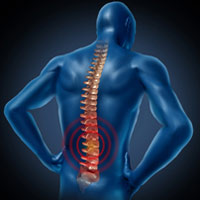Spinal Cord Injuries After Car Accidents
February 21, 2019 The body’s central nervous system has two main components: the spinal cord and the brain. They work in sync, as the spinal cord and brain transmit nerve impulses back and forth.
The body’s central nervous system has two main components: the spinal cord and the brain. They work in sync, as the spinal cord and brain transmit nerve impulses back and forth.
When damaged, the spinal cord may stop working properly, which can lead to loss of function, feeling, and mobility. A main cause of spinal cord injuries is motor vehicle accidents. These injuries are amongst the most debilitating, and can cause long-lasting or permanent damage.
Spinal Cord Anatomy
Spinal cords stretch downward from the bottom of the brain about 18 inches to the waist. Nerves extend outwards, carrying sensory information to the body for muscle movement, pain, hot/cold, and more. The spinal column surrounds the cord; a vertebra of the spinal column is made from ring-shaped bone.
The human body has 33 vertebrae. There are eight neck (cervical) vertebrae, and starting at the top, the first is the C-1, and the last is C-8. Next are thoracic vertebrae, which are near the chest. These are referred to as T-1 through T-12. Last are sacral vertebrae, which go from the pelvis down to the bottom. There are five; S-1 to S-5.
How Spinal Injuries Affect the Body
Cervical vertebrae injuries can cause the most trauma to the body, since they are higher up. The spot where the cord is damaged can stop the brain from communicating to the body below the injury. C1 or C2 damage is less common, but these most often lead to paralysis or death.
Cervical spine injuries can lead to quadriplegia and hand dysfunction. Thoracic spinal injuries can affect the victim’s legs, causing paraplegia. They can also cause problems with abdominal muscles and the hips.
Every spinal cord injury is different, and can be “complete” or “incomplete.” If complete, there is a total loss of function below the injury on both sides of the body. Incomplete means that there is some function, which could be on one side only. Or there could be some sensation, but an inability to move a body part.
Other symptoms of spinal cord injuries include loss of bladder and bowel control, blood pressure problems, and in life-threatening cases an inability to breathe.
Treatment for Spinal Injuries
Spinal cord injuries cannot be cured, but significant advances in research and treatments have been made. If treated immediately, the patient may benefit from steroids, which can reduce some swelling.
Some patients recover partial function after months have passed, although most will not return to their previous mobility. Many end-up using crutches, braces, and manual or powered wheelchairs, depending on the severity of the injury.
When an Accident Happens
A serious car accident can change the course of someone’s life if they experience a spinal cord injury. Recovery time can be extensive, and disabilities can be challenging to live with. Some individuals may end up on permanent disability, faced with the high costs of medical care and equipment.
Accidents like these can severely impact individuals, their families, and future plans.
Baltimore Car Accident Lawyers at LeViness, Tolzman & Hamilton Help Those Who Suffer a Spinal Cord Injury in a Car Accident
Spinal cord injuries can be devastating, and you are entitled to expert legal representation to get the compensation you deserve. For a free consultation, contact the Baltimore car accident lawyers at LeViness, Tolzman & Hamilton by calling 800-547-4LAW (4529) or contact us online.
Our offices are located in Baltimore, Columbia, Glen Burnie, and Towson, allowing us to represent car accident victims in Maryland, including those in Anne Arundel County, Baltimore County, Carroll County, Harford County, Howard County, Montgomery County, Maryland’s Western Counties, Prince George’s County, Queen Anne’s County, Southern Maryland, and the Eastern Shore, as well as the communities of Catonsville, Essex, Halethorpe, Middle River, Rosedale, Gwynn Oak, Brooklandville, Dundalk, Pikesville, Nottingham, Windsor Mill, Lutherville, Timonium, Sparrows Point, Ridgewood, and Elkridge.






